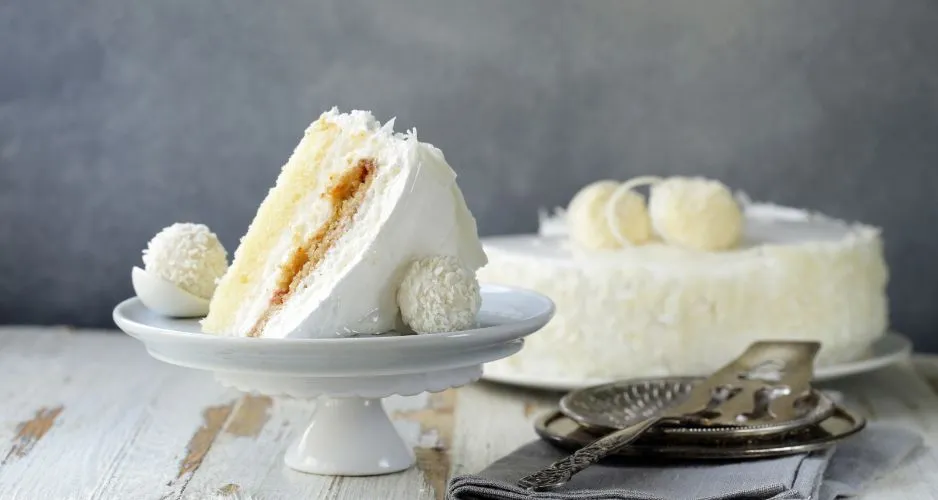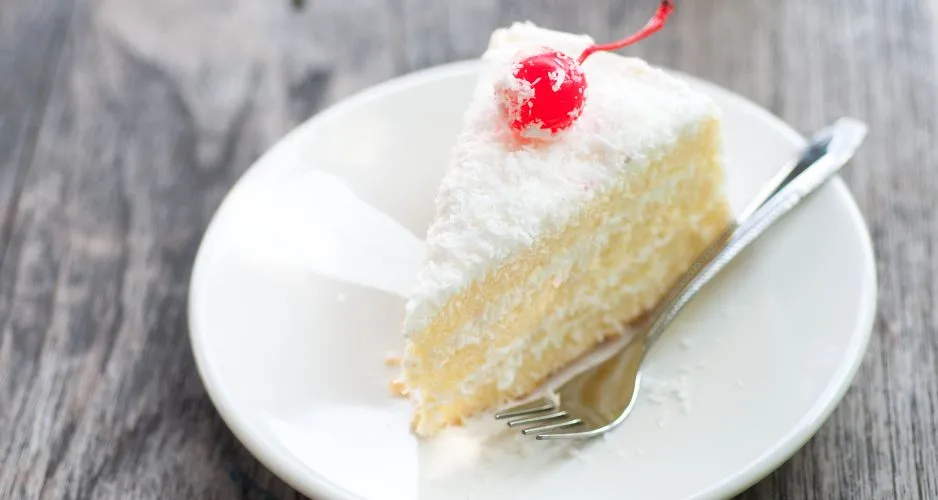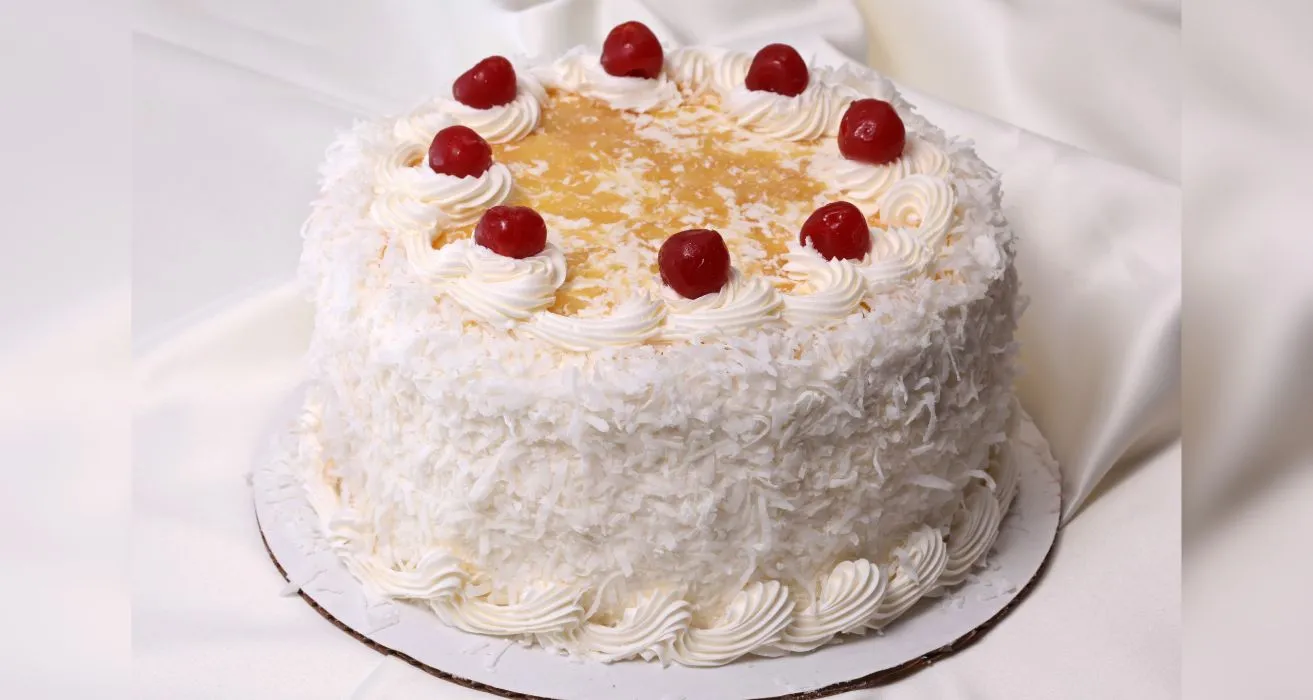Diving into the world of baking, there’s one dessert that stands out for its delightful blend of flavors and textures: the coconut cake recipes. A favorite among many, this cake offers a taste of the tropics with its rich, moist layers and sweet, fluffy frosting. Whether you’re a seasoned baker or new to the kitchen, the journey to perfecting this dessert promises to be both exciting and rewarding. In this article, we’ll explore everything from classic recipes to creative twists on this beloved cake, ensuring you have all the knowledge and inspiration you need to bake your masterpiece. Let’s embark on this delicious adventure, ensuring each slice is a bite of paradise.
Introduction
The Popularity and Versatility of Coconut Cake
Coconut cake, with its light, fluffy texture and rich, sweet flavor, has long been a staple at celebrations and family gatherings. Its unique taste comes from the tropical coconut, which adds a moist and tender quality to the cake that’s hard to resist. But what truly makes coconut cake special is its versatility. From simple, classic recipes to elaborate, multi-layered creations, there’s a version of this cake for every occasion and skill level.
What Makes Coconut Cake Special?
The secret to the irresistible appeal of coconut cake lies in its main ingredient: the coconut. This tropical fruit not only infuses the cake with its distinctive flavor but also contributes to its moistness, making every bite a delightful experience. Whether shredded, toasted, or used in the form of coconut milk, it brings a touch of the exotic to the dessert table.
Combining baking tips from experts with the right mix of ingredients, including the perfect blend of flour, sugar, and butter, results in a cake that’s both tender and flavorful. Adding to its charm are the endless possibilities for customization. From incorporating chocolate or lime for a twist on the traditional recipe to adapting it for gluten-free or vegan diets, coconut cake is a canvas waiting for your creative touch.
In crafting the perfect coconut cake, remember that the joy of baking comes not just from the delicious end product but from the process itself. So, roll up your sleeves, gather your ingredients, and prepare to embark on a baking adventure that promises to be as fun as it is rewarding.
Stay tuned for the next part, where we’ll dive into classic coconut cake recipes, providing step-by-step guides and pro tips to ensure your baking success.
Classic Coconut Cake Recipes
Delving into the heart of coconut cake baking, we find ourselves surrounded by a myriad of classic recipes. Each recipe has its charm, offering a unique take on this beloved dessert. Below, we’ll explore a traditional recipe that stands the test of time, promising to delight your taste buds with its moistness, flavor, and simplicity.
Classic Coconut Cake Recipe Overview
A timeless classic, the traditional coconut cake is a testament to the enduring appeal of simple, well-executed flavors. This recipe combines the sweet, nutty taste of coconut with the light, airy texture of sponge cake, resulting in a dessert that’s both elegant and irresistibly delicious.

Step-by-Step Guide to Making Classic Coconut Cake
Ingredients:
- 3/4 pound (3 sticks) unsalted butter, at room temperature
- 2 cups sugar
- 5 extra-large eggs, at room temperature
- 1 1/2 teaspoons pure vanilla extract
- 3 cups all-purpose flour
- 1 teaspoon baking powder
- 1/2 teaspoon baking soda
- 1/2 teaspoon kosher salt
- 1 cup milk
- 4 ounces sweetened shredded coconut
- For the frosting:
- 1 pound cream cheese, at room temperature
- 1/2 pound (2 sticks) unsalted butter, at room temperature
- 3/4 teaspoon pure vanilla extract
- 1 pound confectioners’ sugar, sifted
- 6 ounces sweetened shredded coconut
Directions:
- Preheat your oven to 350 degrees F. Grease two 9-inch round cake pans and line them with parchment paper.
- In a mixing bowl, cream together the butter and sugar until light and fluffy. Add the eggs one at a time, followed by the vanilla extract, mixing well after each addition.
- In a separate bowl, sift together the flour, baking powder, baking soda, and salt. Alternately add the dry ingredients and milk to the butter mixture, starting and ending with the dry ingredients. Mix until just combined.
- Fold in the shredded coconut, then pour the batter evenly into the prepared pans. Bake for 45 to 55 minutes or until a tester comes out clean. Cool the cakes in the pans for 10 minutes, then transfer to a wire rack to cool completely.
- For the frosting, beat together the cream cheese, butter, and vanilla extract until smooth. Gradually add the confectioners’ sugar and continue beating until creamy.
- To assemble, place one cake layer on a serving plate, spread with frosting, then top with the second layer. Frost the top and sides of the cake, and press the remaining shredded coconut onto the frosting.
Tips for Perfect Coconut Cake Every Time
- Ensure all ingredients are at room temperature to achieve a smooth batter.
- Do not overmix the batter to keep the cake light and airy.
- Use sweetened shredded coconut in both the batter and frosting for an extra boost of flavor.
- Let the cakes cool completely before frosting to prevent the frosting from melting.
By following this guide, you’ll create a classic coconut cake that’s moist, flavorful, and beautifully presented. It’s a recipe that pays homage to the traditional roots of this dessert, while still leaving room for your personal touch.
Stay tuned for the next part, where we’ll dive into creative twists on traditional coconut cake, adding a dash of innovation to this classic dessert.
Creative Twists on Traditional Coconut Cake
Venturing beyond the classic recipe, the realm of coconut cake offers a playground for creativity and innovation. By infusing traditional coconut cake with unexpected flavors and ingredients, we can elevate this beloved dessert to new heights of deliciousness. Let’s explore some unique variations that promise to tantalize your taste buds and impress your guests.
Introduction to Creative Variations
The beauty of coconut cake lies in its adaptability. Whether you’re looking to add a zesty twist with citrus flavors or enrich the cake with chocolate indulgence, there’s a variation out there for every palate. These creative spins on the traditional recipe not only add depth and complexity to the cake’s flavor profile but also offer a delightful surprise to those accustomed to the classic version.
Recipes for Unique Coconut Cake Variations
Coconut Lime Cake
Ingredients:
- Follow the base recipe from Part 2, adding:
- Zest of 2 limes to the cake batter
- 2 tablespoons lime juice to the frosting
Directions:
- Incorporate the lime zest into the cake batter along with the vanilla extract.
- Prepare and bake the cake according to the classic recipe’s directions.
- For the frosting, add lime juice along with the vanilla extract, creating a tangy twist that complements the sweetness of the coconut.
Chocolate Coconut Cake
Ingredients:
- Follow the base recipe from Part 2, adding:
- 1/2 cup unsweetened cocoa powder to the dry ingredients
- Chocolate shavings for decoration
Directions:
- Sift the cocoa powder with the flour and other dry ingredients to ensure an even chocolate flavor throughout the cake.
- Bake as per the classic recipe, and once cooled, frost the cake.
- Garnish with chocolate shavings and sweetened shredded coconut for a visually stunning and deliciously rich dessert.
Vegan Coconut Cake
Ingredients:
- 3/4 cup vegan butter, softened
- 2 cups sugar
- 2 cups all-purpose flour
- 1 cup coconut milk
- 1/2 cup unsweetened applesauce (as an egg substitute)
- 1 1/2 teaspoons baking powder
- 1/2 teaspoon baking soda
- 1 teaspoon vanilla extract
- 4 ounces sweetened shredded coconut
Directions:
- Cream the vegan butter and sugar. Add the applesauce and vanilla, mixing until well combined.
- Sift together the flour, baking powder, and baking soda. Alternately add the dry ingredients and coconut milk to the wet ingredients, starting and ending with dry ingredients.
- Fold in the shredded coconut and bake as per the classic recipe.
Decorating Your Coconut Cakes
The final touch to any cake is its decoration, and with coconut cake, the possibilities are endless. From a simple dusting of powdered sugar and shredded coconut to elaborate designs using cake decorating techniques, the right decoration can turn your cake into a centerpiece. Consider using edible flowers, citrus slices, or chocolate curls to add color and texture, making your coconut cake as beautiful as it is delicious.

In the world of baking, creativity knows no bounds. By experimenting with these variations and putting your unique spin on them, you can discover new favorites and keep the tradition of coconut cake alive and exciting.
Stay tuned for the next part, where we’ll address frequently asked questions about coconut cake recipes, helping you navigate any baking challenges with ease.
FAQs on Coconut Cake Recipes
As we journey through the delightful world of coconut cake baking, several common questions arise. Whether you’re a novice baker or seasoned pro, these FAQs aim to clear up any confusion and enhance your baking experience. Let’s dive into some of the most frequently asked questions about coconut cake recipes.
What flavors go well with coconut?
Coconut pairs beautifully with a variety of flavors, enhancing both sweet and savory dishes. For sweet combinations, tropical fruits like mango, pineapple, and passion fruit bring out coconut’s natural sweetness, creating a vibrant flavor profile. Citrus fruits, berries, and tangy flavors also complement coconut well, adding a refreshing twist to desserts. Chocolate, caramel, and vanilla offer rich, decadent pairings, perfect for indulgent treats. In savory dishes, coconut balances the heat of chili, ginger, and curry spices, adding a creamy texture to curries and soups. Nutty and earthy elements like almonds, pecans, and spices such as cinnamon, nutmeg, and cardamom also pair well, enhancing coconut’s versatility in culinary creations.
What country is coconut cake from?
Coconut cake, a popular dessert in the United States, particularly in the Southern region, showcases the versatility and beloved taste of coconut. This cake often features layers of moist cake with coconut cream or frosting, covered in shredded coconut. While it is widely associated with Southern U.S. cuisine, the exact origins of coconut cake are difficult to pinpoint, as coconut has been integrated into various cultures and cuisines around the world.
How do you put coconut on a cake?
To adorn a cake with coconut, start by spreading your frosting or cream of choice over the cake’s surface. Once the cake is frosted, gently press shredded or flaked coconut onto the wet frosting. This can be done on the top and sides of the cake, depending on your design preference. For an even more pronounced coconut flavor and texture, consider toasting the coconut flakes before applying them to the cake. Toasting enhances the coconut’s nutty flavor and adds a delightful crunch.
How do you make a cake moist and fluffy?
To achieve a moist and fluffy cake, several key techniques can be employed. Use the correct flour type, typically cake flour, which has a lower protein content and helps create a tender crumb. Ensure ingredients like butter and eggs are at room temperature to incorporate more air into the batter. The creaming method, where sugar and butter are beaten together until light and fluffy, is essential for introducing air and volume. Moisture can be enhanced by adding yogurt, sour cream, or buttermilk. Finally, avoid overmixing once the flour is added, as this can develop the gluten and lead to a denser cake.
What’s the best type of coconut to use for coconut cake?
The best type of coconut for baking is sweetened shredded coconut. Its moisture and added sweetness complement the cake’s flavor profile perfectly. For a more pronounced coconut taste, consider using coconut milk in place of regular milk in your recipe.
How can I store coconut cake to keep it moist?
To keep your coconut cake moist, store it in an airtight container at room temperature for up to two days. For longer storage, refrigerate the cake, but let it come to room temperature before serving to ensure the best flavor and texture.
What are some tips for making my coconut cake moist and fluffy?
- Ensure all ingredients, especially eggs and butter, are at room temperature before starting.
- Avoid overmixing the batter once the flour is added, as this can lead to a dense cake.
- Consider adding a bit of sour cream or yogurt to the batter for extra moisture.
Can I make coconut cake in advance?
Yes, you can bake the cake layers in advance and freeze them for up to a month. Wrap the cooled layers in plastic wrap and aluminum foil before freezing. Thaw overnight in the refrigerator and bring to room temperature before frosting and assembling.
How can I add more coconut flavor to my cake?
To enhance the coconut flavor in your cake, try these tips:
- Use coconut extract along with or in place of vanilla extract in both the cake and frosting.
- Replace the milk in the recipe with coconut milk.
- Toast the shredded coconut used for decoration to intensify its flavor and add a delightful crunch.
Is there a vegan option for coconut cake?
Absolutely! For a vegan coconut cake, substitute dairy ingredients with plant-based alternatives like vegan butter and coconut milk. Use unsweetened applesauce or flax eggs as an egg replacement. Check the previous part for a detailed vegan coconut cake recipe.
By addressing these common queries, we hope to make your baking journey smoother and more enjoyable. Remember, the key to a perfect coconut cake lies in the balance of flavors, the right ingredients, and a touch of love.
Stay tuned for the concluding part of our series, where we’ll wrap up with some final thoughts and additional resources to take your coconut cake baking to the next level.
Conclusion and Additional Resources
As we wrap up our exploration of coconut cake recipes, from the classic favorites to innovative twists, it’s clear that this beloved dessert holds a special place in the hearts of bakers and dessert lovers alike. The journey through various recipes, tips, and FAQs reveals the versatility and enduring appeal of coconut cake, a treat that effortlessly adapts to suit any taste or occasion.
Wrapping Up
Coconut cake, with its moist layers and sweet, fluffy frosting, is more than just a dessert; it’s a canvas for creativity and a source of joy for those who bake and those who indulge. Whether you stick to the traditional recipe or venture into creative variations, the key to a perfect coconut cake lies in the quality of ingredients, careful preparation, and the love infused into every step of the baking process.
As you continue to experiment with coconut cake recipes, remember that each attempt is an opportunity to refine your skills and discover new favorites. Embrace the process, learn from your experiences, and don’t be afraid to put your unique spin on this classic dessert.
External Links and Resources
To further enhance your baking journey, here are some additional resources that offer valuable insights, inspiration, and guidance:
- Food Network: A treasure trove of professional baking tips and recipes from renowned chefs.
- PBS Food: Discover classic dessert recipes and baking techniques that bring a touch of elegance to your kitchen creations.
- Epicurious: Dive into a world of culinary creativity with expert advice on cake decorating and flavor combinations.
These resources provide a wealth of information to help you master the art of coconut cake baking and beyond. Whether you’re looking for new recipes to try, seeking advice on perfecting your technique, or searching for decoration inspiration, you’ll find everything you need to elevate your baking game.
In conclusion, the world of coconut cake is vast and varied, offering endless possibilities for creativity and delight. We hope this series has inspired you to embark on your coconut cake baking adventure, armed with the knowledge, skills, and inspiration to create something truly extraordinary. Happy baking!
